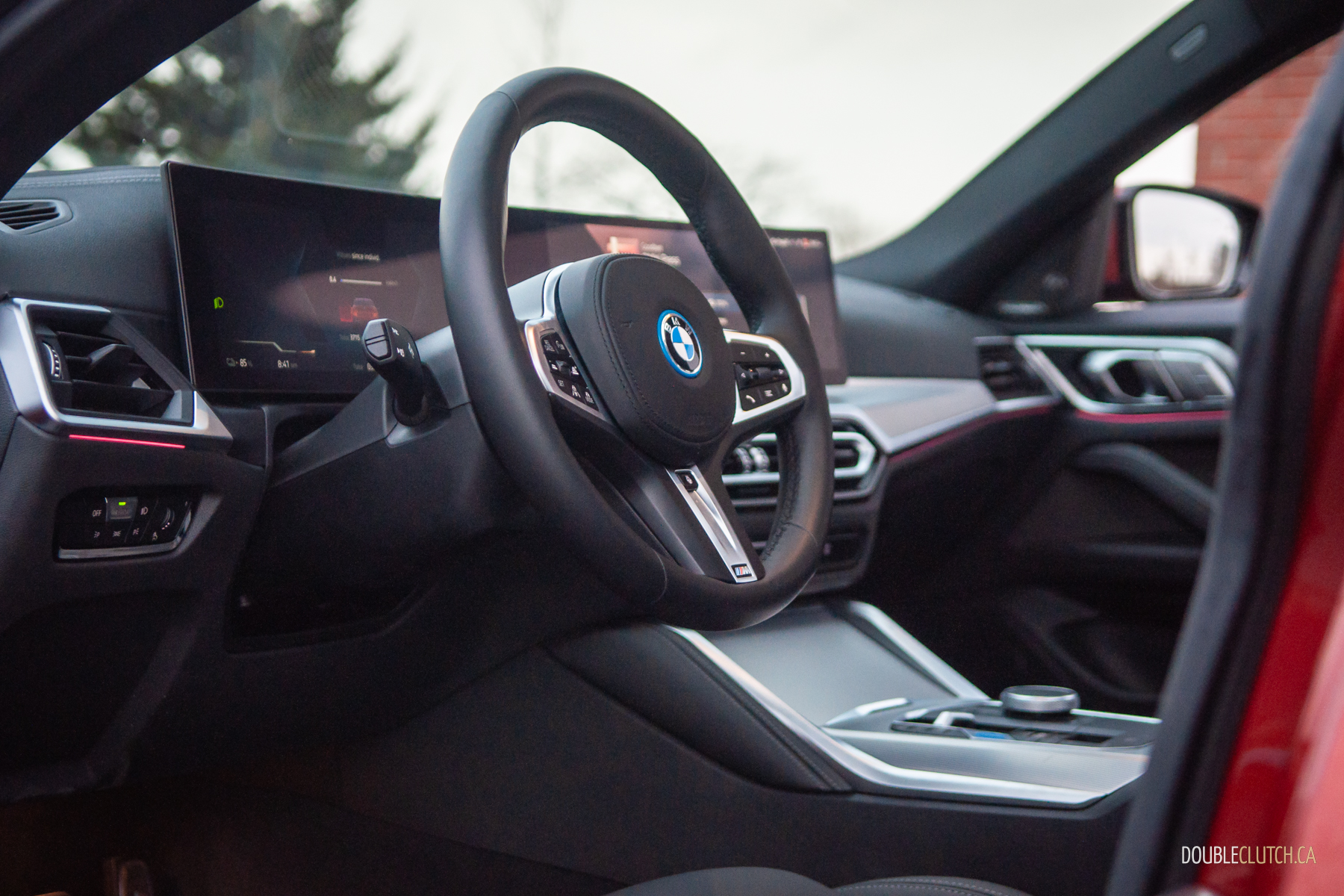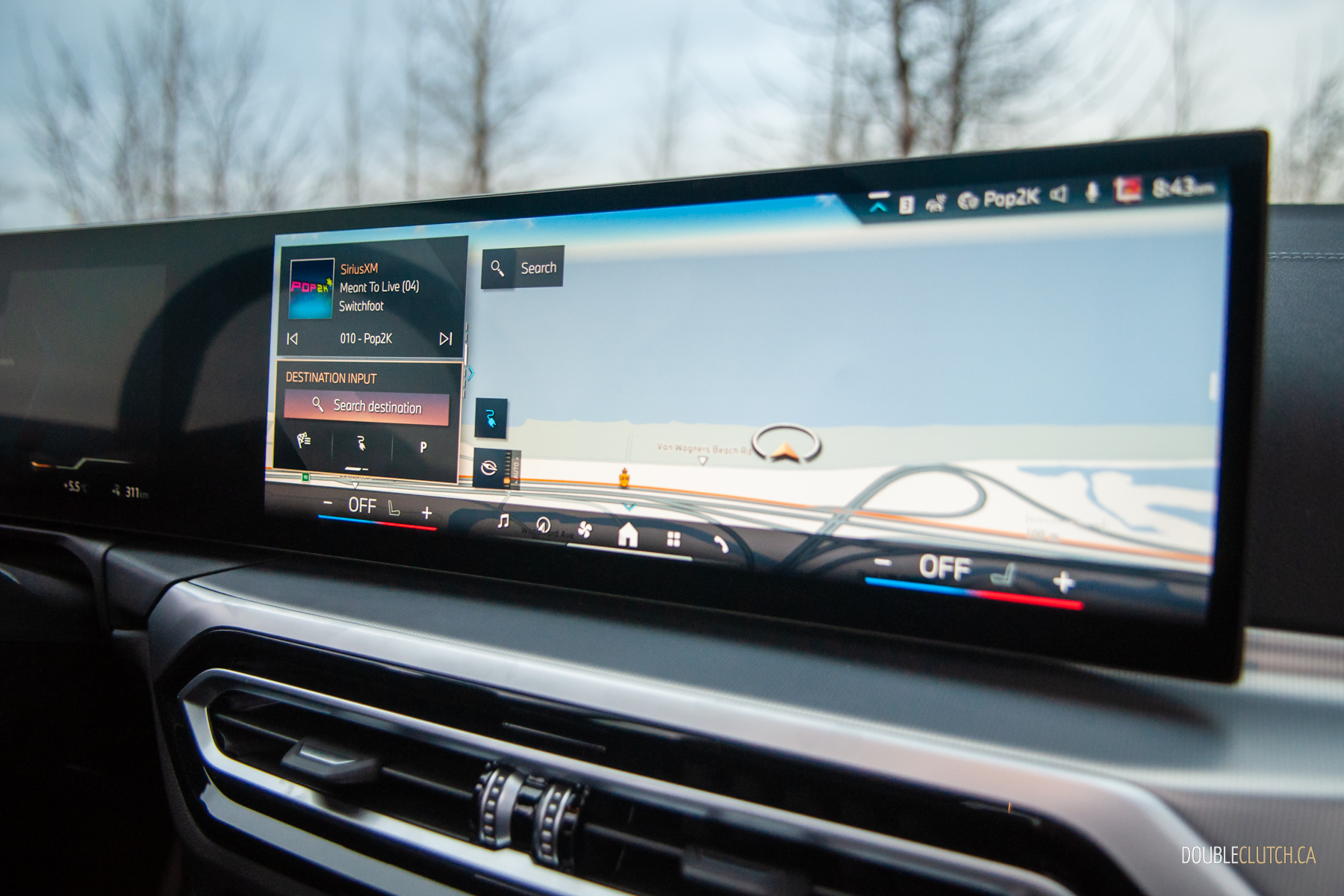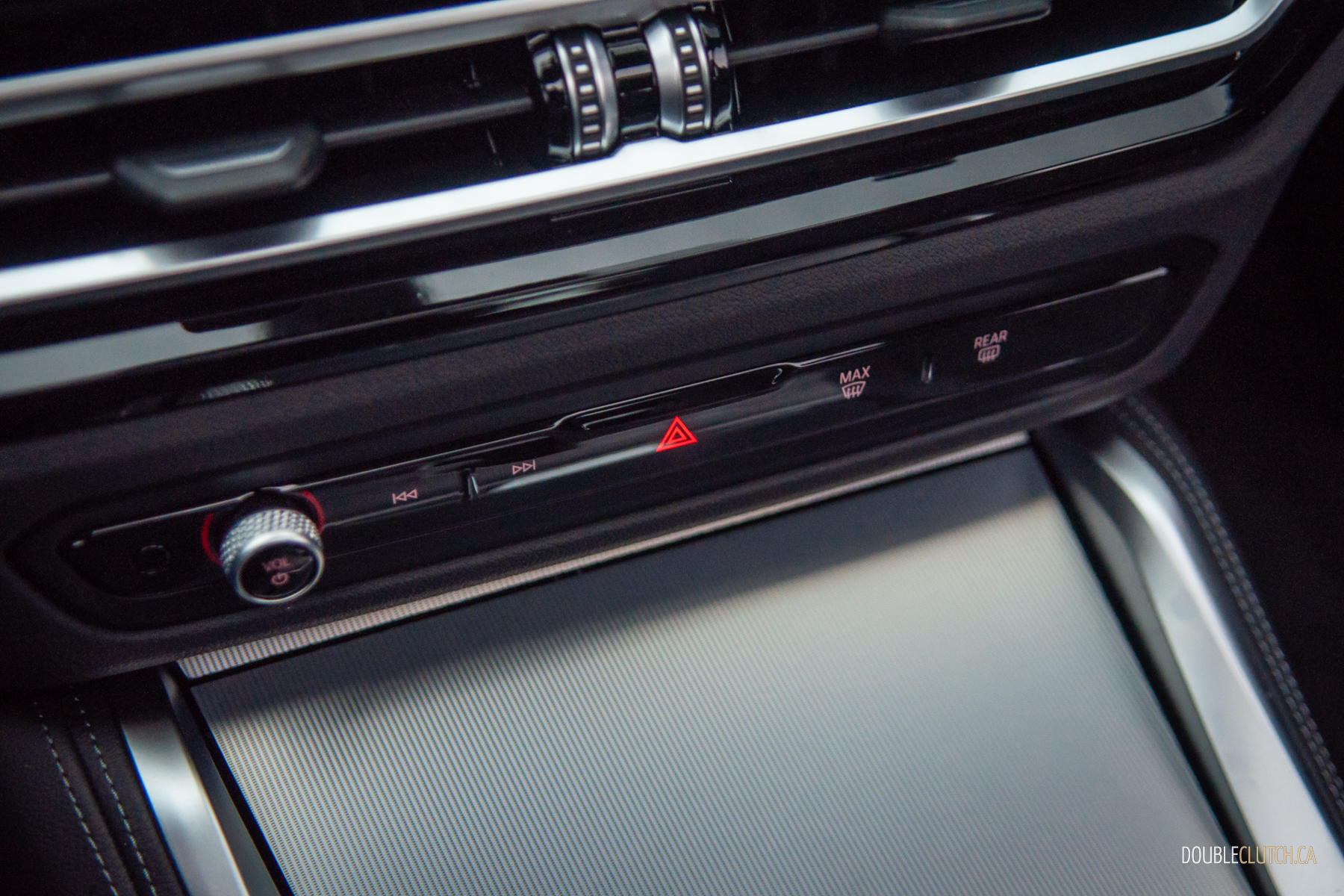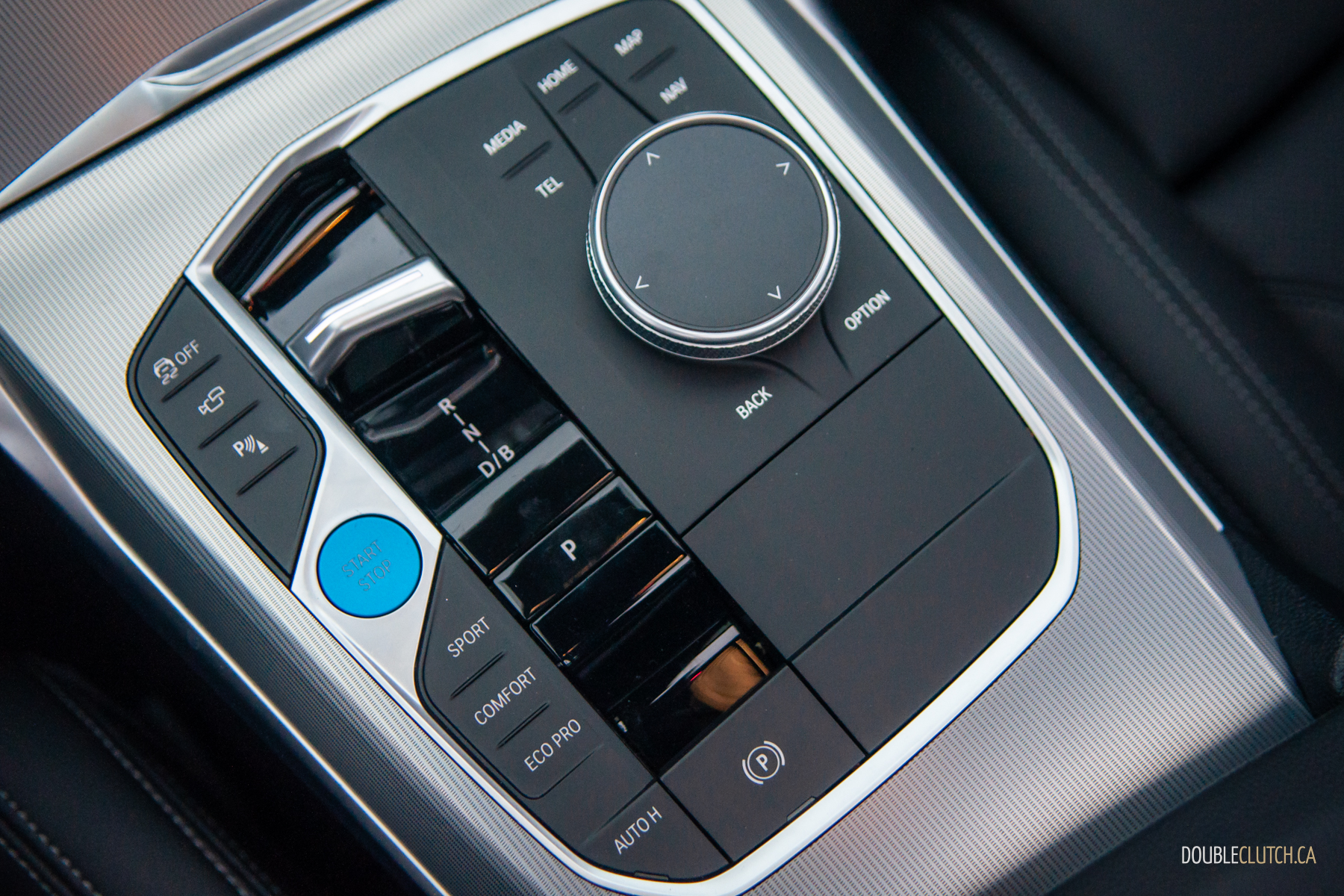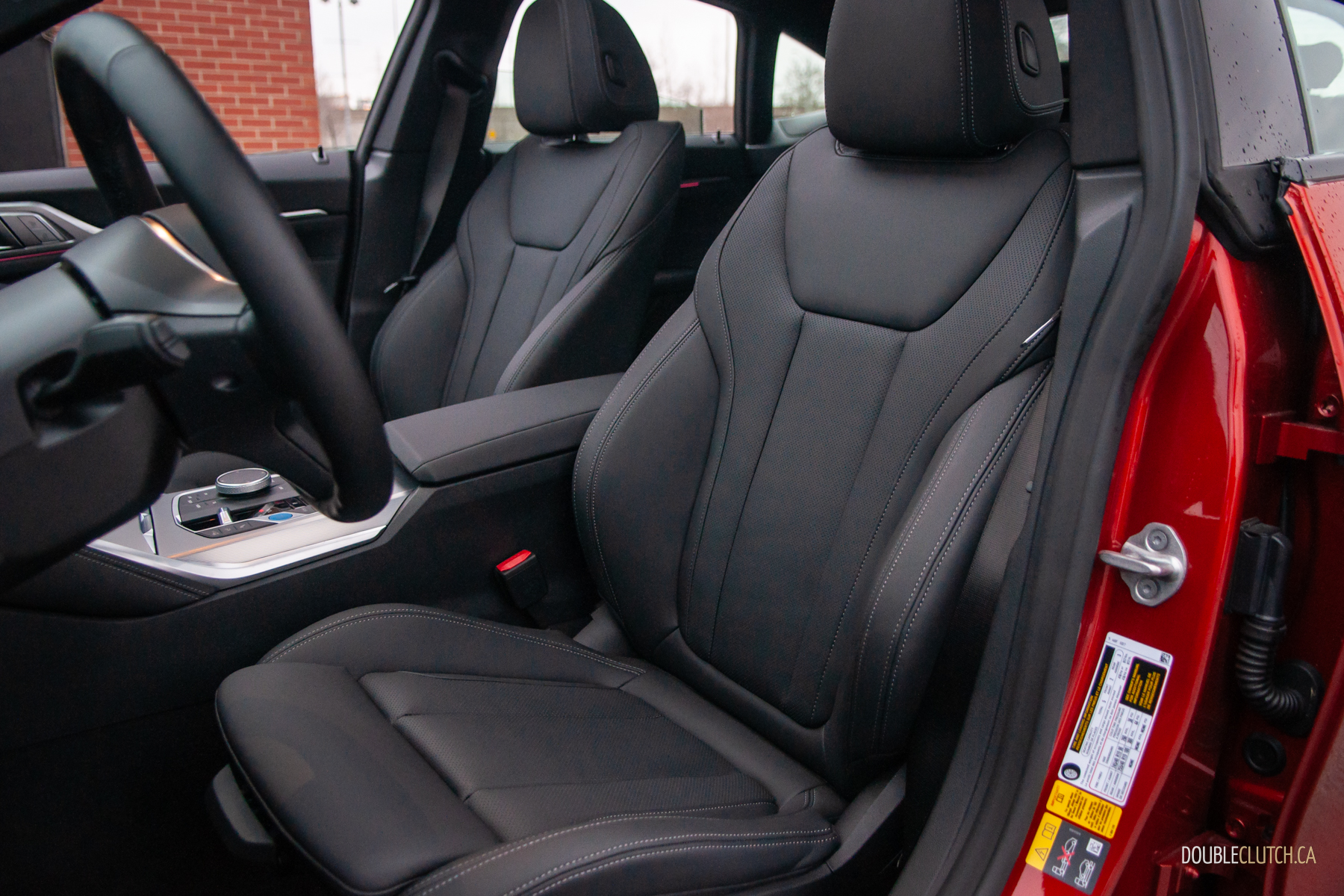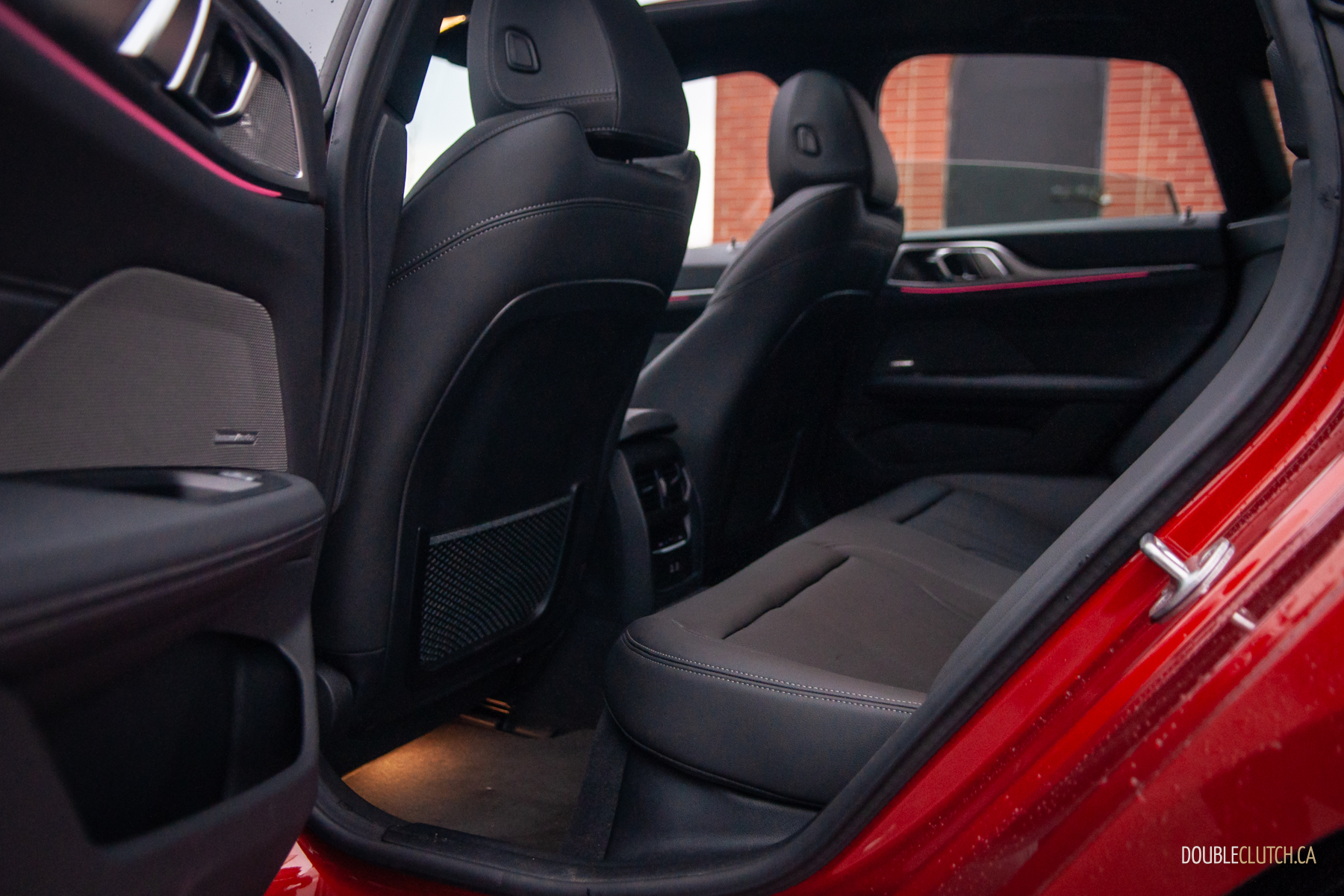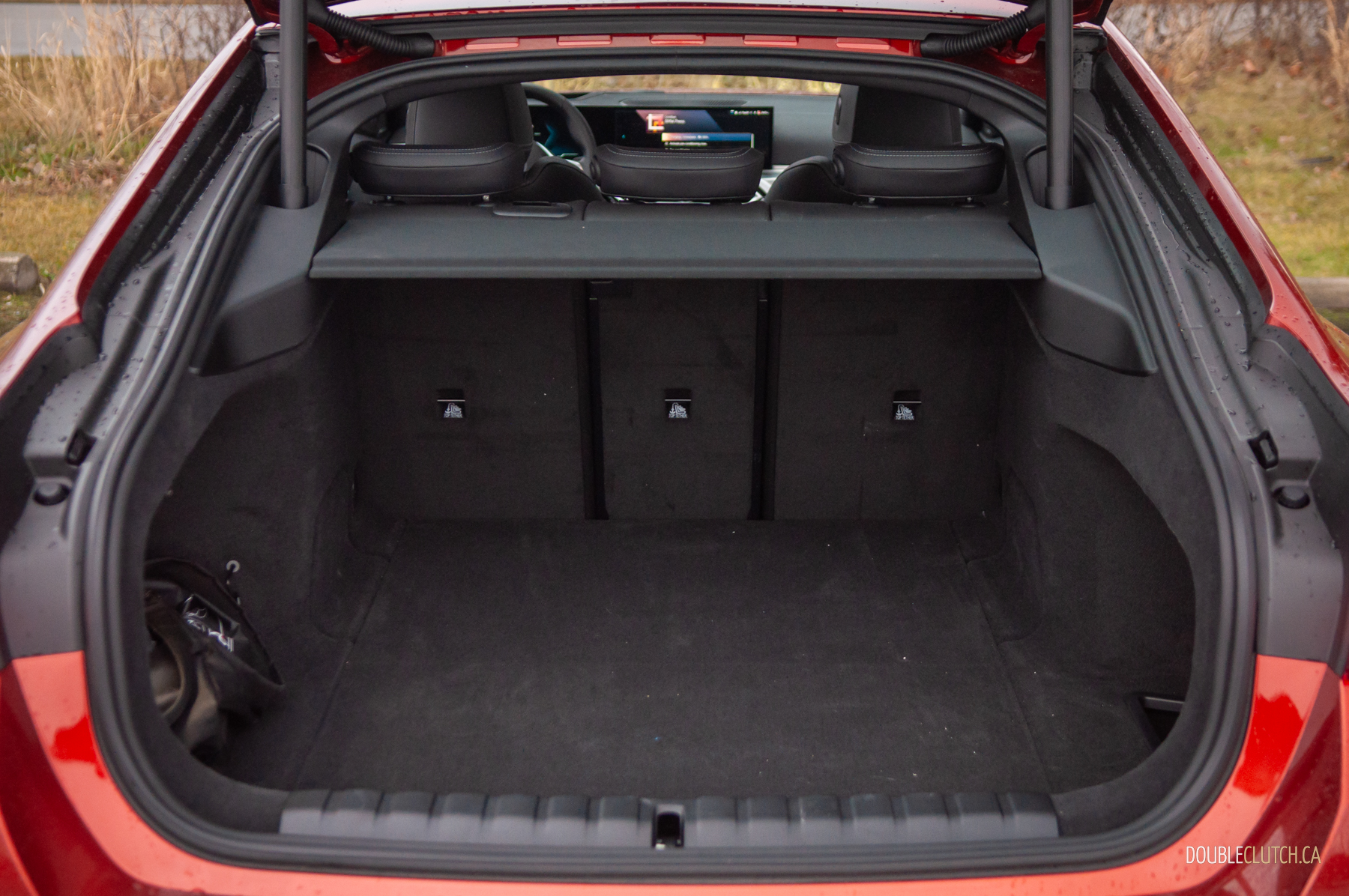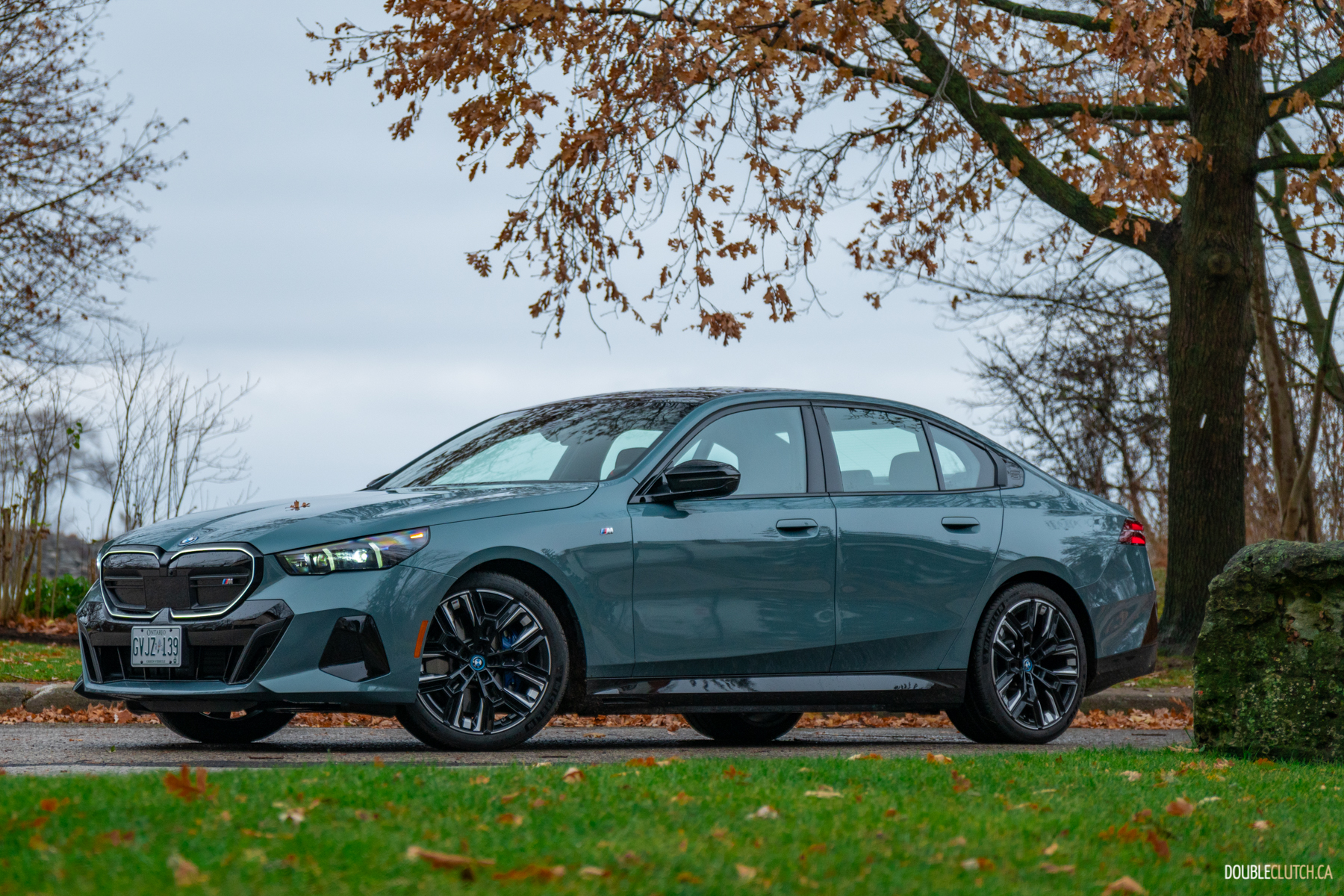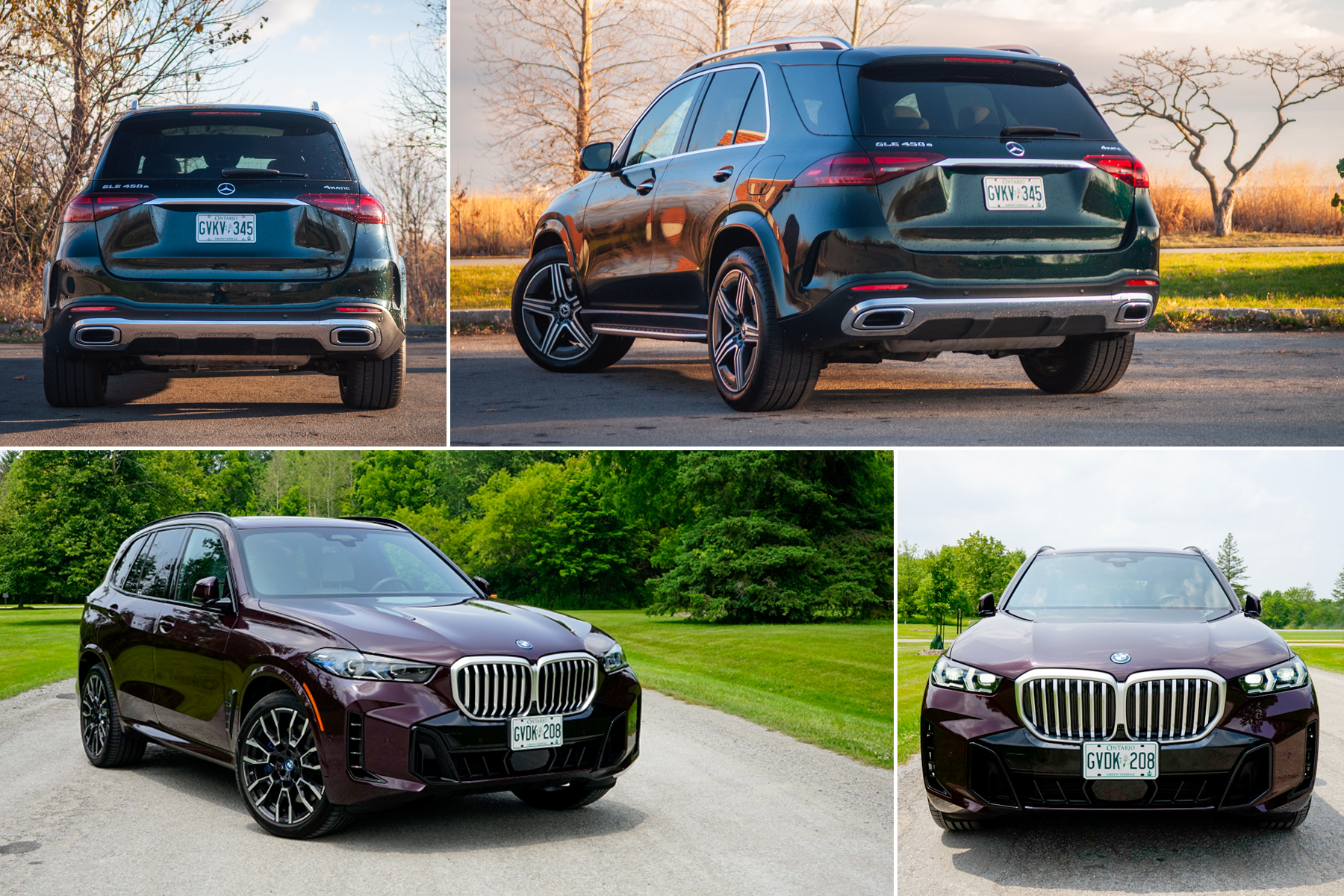We don’t blame you if BMW’s early i cars — the i3 and i8, specifically — didn’t make much of a first impression. Both were cool and cleverly engineered in their own right, but they weren’t exactly the best fit for what most people needed out of a car. The 2024 BMW i4 xDrive40 seeks to right those wrongs, establishing itself not only as a solid upmarket EV, but also perhaps the best-kept secret in BMW’s electric lineup altogether.
In the grand scheme of things, the i4 hasn’t been around long. Based on the 4 Series Gran Coupe, it launched in 2022 as a spiritual successor to the i3. Granted, it’s a bit of an apples-to-oranges comparison versus the i3, but the i4 instantly established itself as a far more compelling choice: it’s much more practical, it has much more range, it’s much prettier overall than the i3 despite having the grille, and best of all, it still feels like a BMW should.
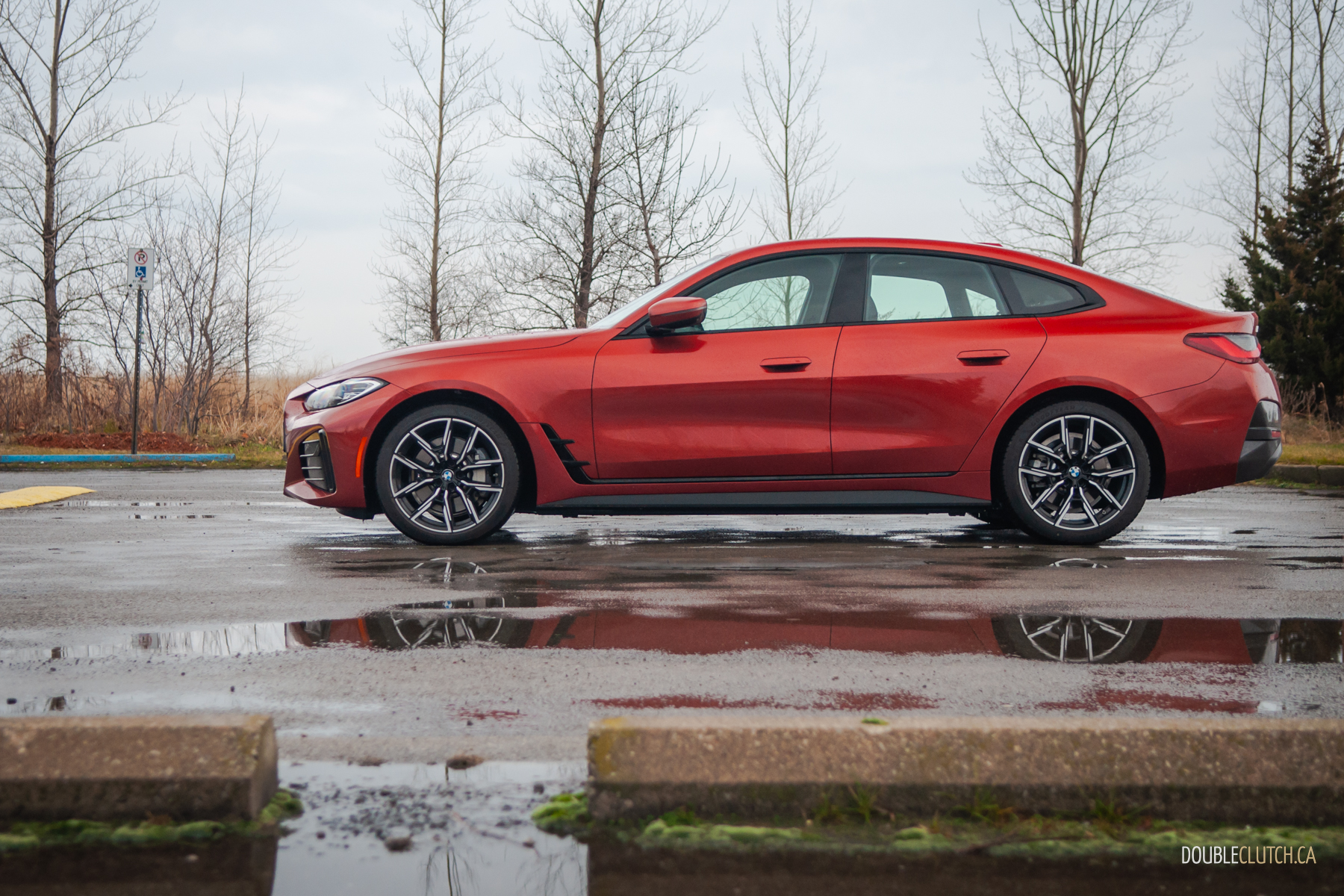
Mind you, until this year, the i4 had one drawback that was either a deal-breaker or a minor nit-pick, depending on who you asked. Despite its compelling, mid-$50,000 base price, the only way to get an all-wheel-drive i4 was to drop at least $80,000 for the top-spec M50 trim. That changes this year: you can now get AWD on this new-for-2024 trim level, the i4 xDrive40.
In addition to four-wheel traction, the i4 xDrive40 also gives you a decent power bump. Working with an 84.3 kWh battery pack, the i4’s two electric motors put out 396 horsepower and 443 pound-feet of torque. That’s a solid bump over the rear-wheel-drive versions, but at 536 hp and 586 lb-ft of torque, the i4 M50 is still the king of the castle. Still, this non-M i4 has more than enough kick: it does the whole instant-torque thing when you want it to, and although we couldn’t quite verify BMW’s claims of a zero-to-100 km/h run in 5.1 seconds, it definitely feels quick.

But what really stands out about this xDrive40 model is something we’ve seen through the rest of the i4 lineup. It’s heavy — the xDrive40 in particular weighs a smidge under 5,000 pounds — but the i4 is also one of the few EVs out there that feel genuinely fun-to-drive. The i4’s steering is well-weighted and offers enough feedback, it rides sports-sedan-firm but avoids feeling overly harsh, it stays flat when you carry a bit of extra speed through a corner, and best of all, the i4 makes up for its weight with generous grip and an inherently playful, tail-happy nature.
In fact, during our time with the i4 xDrive40, the Kia EV6 GT crossed our minds more than once. Both are sloping-roofed EV hatchbacks with a driver-first disposition, for similar money. But the EV6 feels imbalanced, leaning a bit too heavily into the headline-grabbing hullabaloo — Wow, 576 horses! Damn, zero-to-60 in 3.5 seconds! Yo, drift mode! — at the expense of comfort and refinement. The i4, on the other hand, better balances performance, engagement, and interior quality despite being significantly down on power and straight-line speed. Besides, the i4 xDrive40 is about as powerful as an E39-gen M5, and nobody ever complained about those things being underpowered.
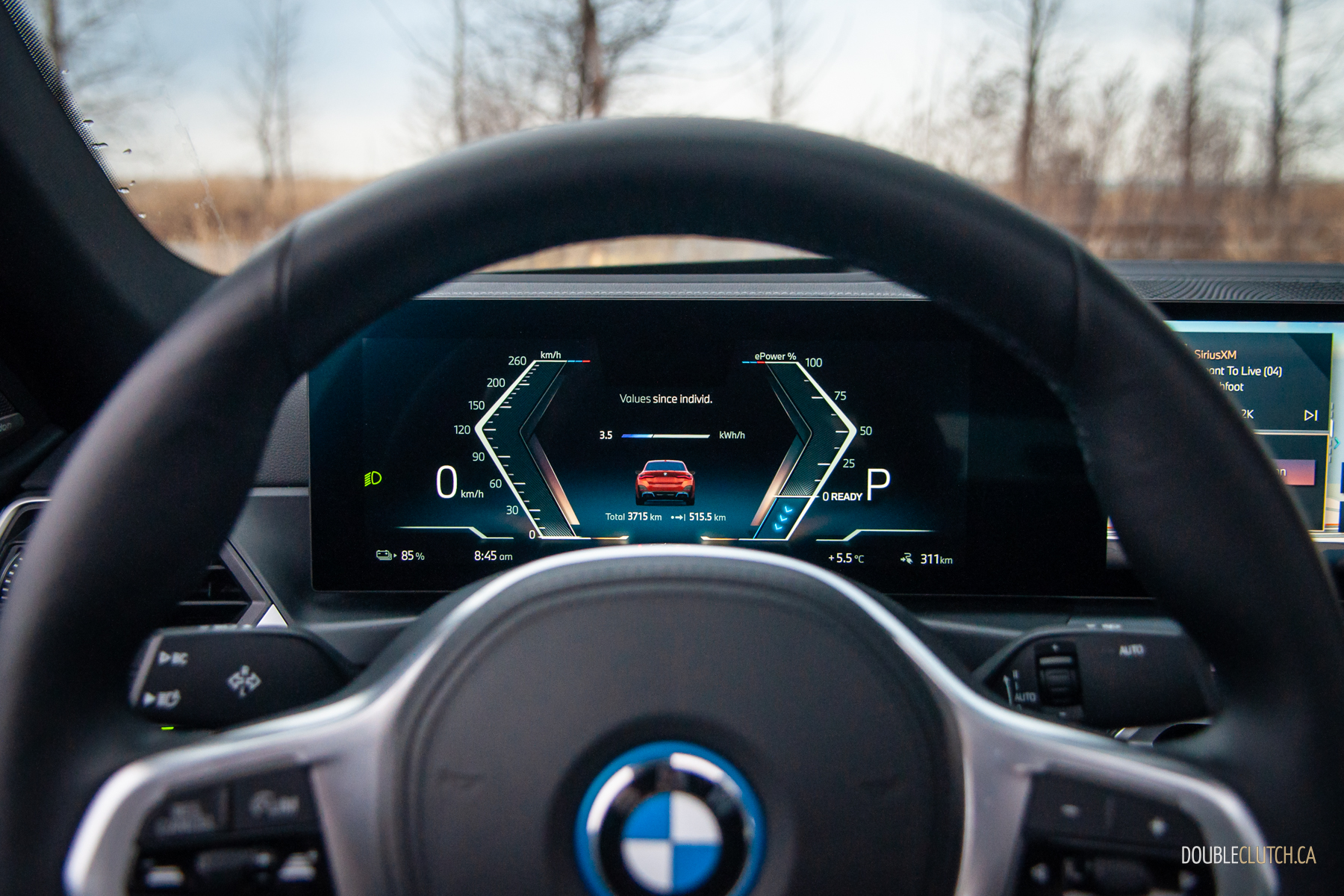
On range and charging, the i4 xDrive40 is officially rated at up to 494 kilometres on a full charge — that’s the most generous of all i4s, followed by the rear-drive eDrive40 at 484 km — but we observed closer to 350 km in our mid-winter testing. Hooked up to a Level 2 charger, BMW says you can expect a full charge in under 10 hours — again, not great, but that’ll just encourage you to get a full night’s sleep. We plugged into a Level 3 public fast-charger with 15 per cent of juice left, and got a full charge in about two and a half hours, averaging about 50 kWh. Those figures aren’t class-leading, and relying on public charging infrastructure is always a dice-roll, but it’ll work well enough for most buyers.
Inside, the i4 looks and feels immediately familiar, especially if you’ve spent any amount of time in any 3 or 4 Series. Materials and overall fit-and-finish is top-notch, visibility all around is quite good, and mercifully, there’s very little in the way of gloss black trim. Wind and road noise are well-controlled, too, despite the i4’s frameless windows, and there’s plenty of room regardless of where you sit. The rear seats don’t feel that pinched on headroom despite the sloping roofline, and the i4 swallows 470 litres of junk in its trunk with the rear seats up, expanding to 1,290 when folded. Again, those figures aren’t exactly class-leading, but it’s more about how you use it; it’s plenty for most, and the liftback opening is a boon for easy loading and unloading. No “frunk” is kind of a bummer, though.
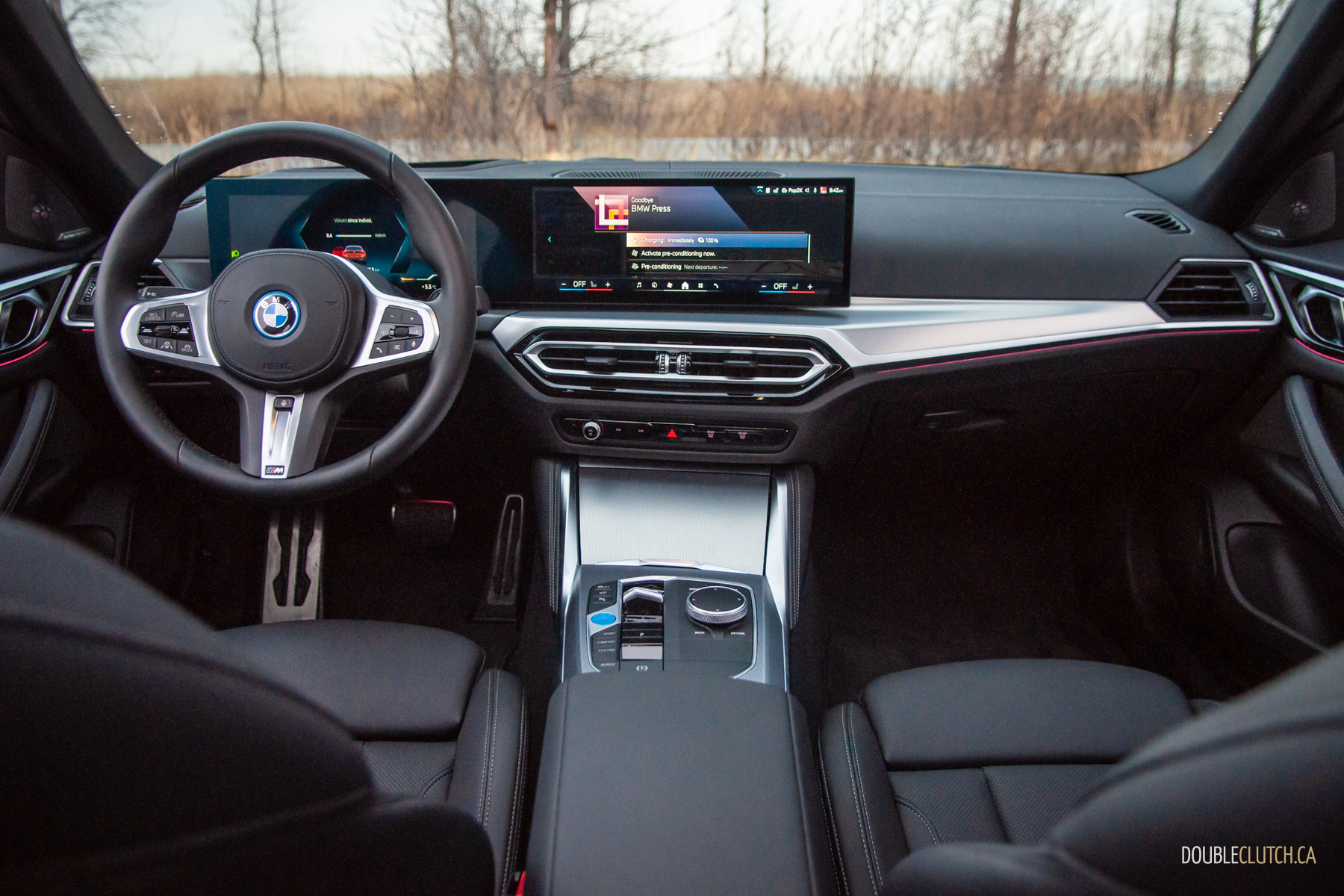
That sense of familiarity carries over to the i4’s tech. It uses the same display arrangement we’ve seen in most other new BMWs, in which the digital gauge cluster and infotainment display live under one glass panel. We still prefer the old look, wherein the gauge cluster lived separately in its own binnacle, but the new setup is responsive and you can fiddle with the infotainment either via the touchscreen, or the rotary knob on the centre console. We do miss the physical switchgear for climate control functions, too, but at least the new infotainment arrangement keeps the climate control on-screen all the time.
Our particular i4 xDrive40 was loaded up with BMW’s full complement of active driver and safety assists as well. They all worked well together and felt natural, but certain features felt almost a half-generation behind. For instance, Assist Plus: BMW’s semi-autonomous highway driving assist needs to be activated manually, it only functions below 60 km/h, and you need to keep your hands on the wheel. By comparison, Assist Plus in other new Bimmers activates automatically, you can use it at actual highway speeds, and is truly hands-free.
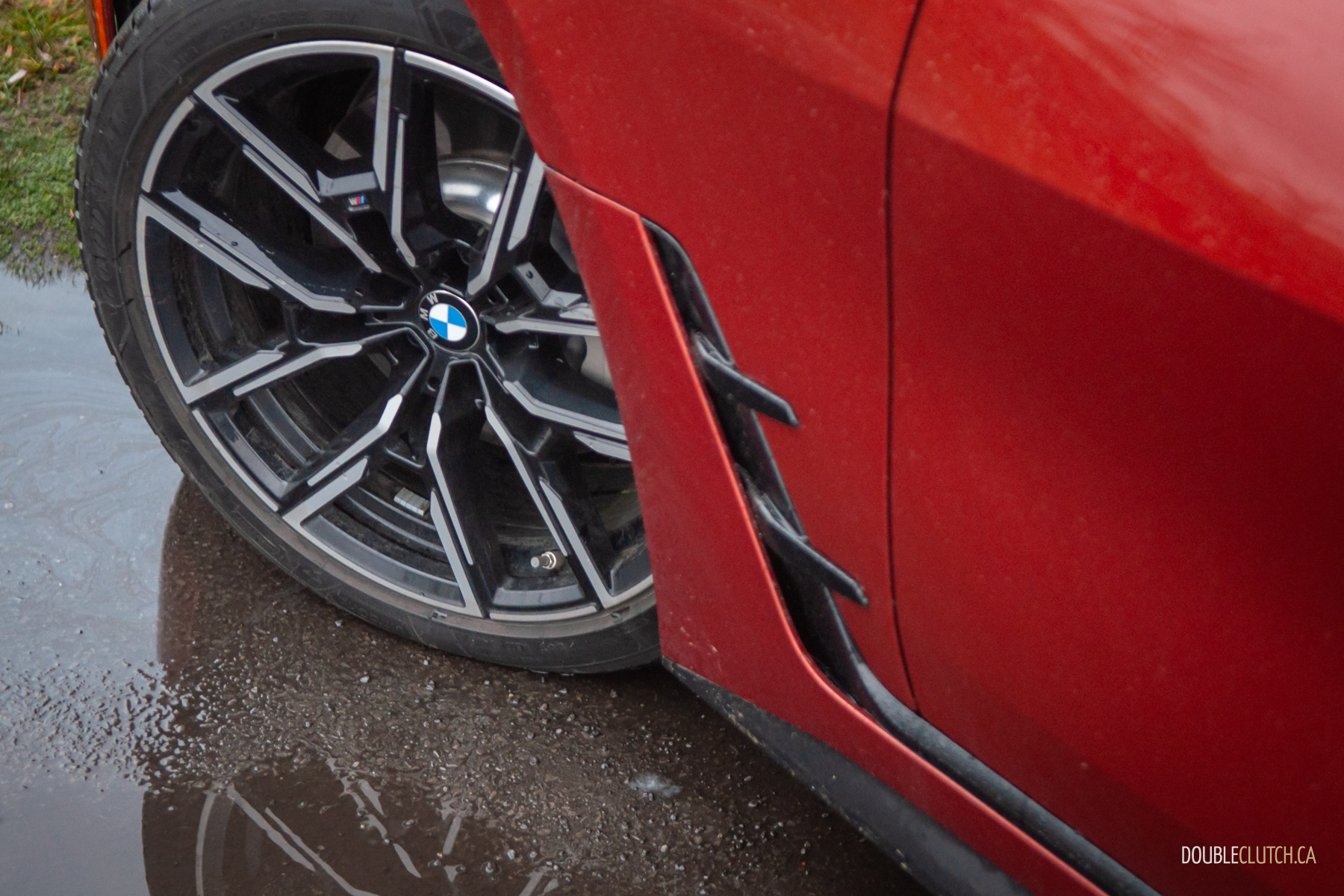
Price-wise, the xDrive40 sits in the mid-to-upper end of the i4 lineup, starting at $69,900 and with our particular tester ringing in at $85,200 as-tested before fees and taxes. It’s certainly a big price delta, but if you’re judicious with options and keep it around the $80,000 mark, you could do a lot worse in the sporty EV segment. Still, basics at this price point like Comfort Access, memory seats, a heated steering wheel, and a 360-degree camera should really be standard, not part of a $9,250 package.
The 2024 BMW i4 xDrive40 delivers what you’d expect out of a sporty EV. It does the instant-torque thing, it makes spaceship noises, it gets good-but-not-great range, and it has all the tech you could possibly ever need. But what sets the i4 apart is that it does all this, while also managing to feel as engaging, playful, and familiar as most other gas-powered BMWs — and unlike BMW’s earlier EV efforts, you can still use the i4 like a regular car.






